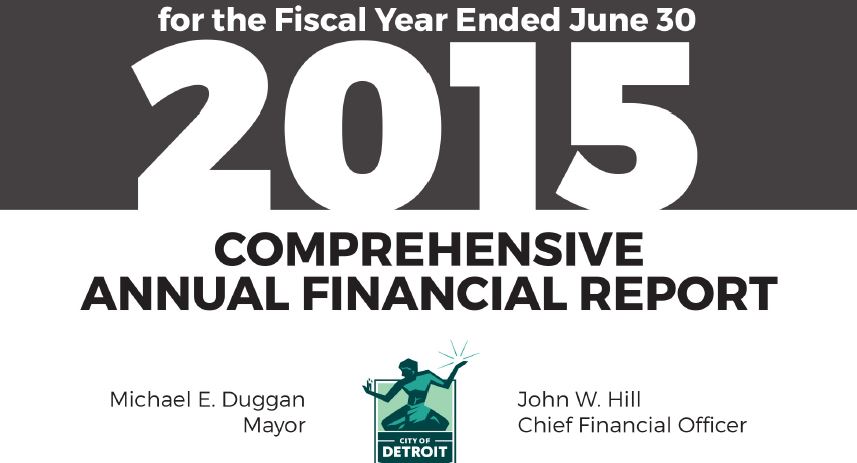Detroit’s Financial Picture
New financial report details Detroit’s post-bankruptcy path.

City officials this week filed Detroit’s Comprehensive Annual Financial Report, known as the “CAFR.”
It’s a document that cities and school districts are required by law to file annually with detailed financial reporting. The city’s latest CAFR (downloadable below) covers Fiscal Year 2015, which ran from July 1, 2014 to June 30, 2015. As the city exited bankruptcy Dec.10, 2014, the first roughly six months of post-Chapter 9 are reflected.
City Budget Director John Naglick is quick to point out this CAFR shows a $438 million surplus in the fund balance, a number that was a $73 million deficit in the month before the city filed for bankruptcy in July 2013. “So a substantial turnaround courtesy of the bankruptcy and also because of very conservative budgets that we’ve done so we make sure we’re going to run these fund balances,” says Naglick, who is also the deputy chief financial officer.
Some of that surplus comes from the one-time, $125 million exit financing that was part of the bankruptcy case. It also comes from savings realized from vacant positions at the city, according to a state report also released this week.
In the CAFR, the city’s outstanding general obligation bond debt for “governmental activities” grew by about 80 percent in the 2015 fiscal year, rising from about $1.1 million in fiscal 2014 to $1.6 million in fiscal 2015. Naglick says those figures reflect bankruptcy settlements that issued some notes for retiree health care, for a settlement with bond insurer Syncora and other creditors.
